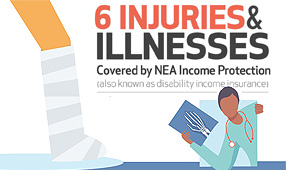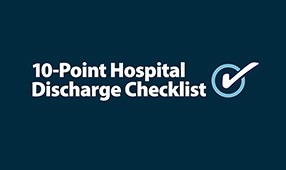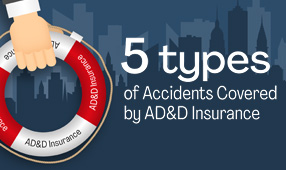Work in the education field can be incredibly rewarding‚ but it can also put you at risk for illness or injury. From conditions brought on by physical requirements of the job—onsite or at home—to workplace stress, these issues can lead to more serious problems. If left unaddressed, they could prevent you from being able to work or do daily tasks.
Here are a few of the health problems to which educators are commonly susceptible, plus some tips, tools and membership benefits to help you address them.
1. Voice disorders and hearing loss
How these affect educators: From speaking over noisy classrooms and buses to calling in students from recess, educators’ vocal cords are under a lot of stress. On average, teachers are more than twice as likely as non-teachers to suffer from vocal problems.1
All those loud noises can affect your hearing, too. Think about how loud it is when a rattling air conditioner, a hissing radiator and chattering classroom noises combine.
According to OSHA, sounds over 85 decibels—that’s comparable to raising your voice to talk to someone who’s three feet away—can lead to hearing loss over the duration of an eight-hour workday.2 While you might not be experiencing sounds quite this loud on a regular basis, shorter durations of loud noises also can affect your hearing.
How to prevent issues or soothe symptoms: Stay hydrated, look for times when you can rest your voice and ears (think lunch, study halls, student-led discussions), and avoid shouting whenever possible. Try non-verbal cues to get students’ attention, such as clapping or flipping a light switch. You might also try a small speaker system with a headset so you don’t have to project your voice all day.
Determine which sounds you have control over and adjust accordingly. Perhaps you could turn off a noisy old fan during a lesson or work with your students to implement quiet times. You also can discuss loud classroom noises with your administrators to see if there are any possible solutions.
If the damage already has been done, then surgery, physical therapy or hearing aids may be able to help. Consult with a physician to find out what your best options might be.
2. Eye strain
How this affects educators: We’re using screens more than ever in our day-to-day lives and at work, and that can take a toll. Strain can happen when you stare at your laptop or phone for too long without a break and can be exacerbated by dry air, screen glare and existing vision problems.
With more schools continuing to offer virtual options on an extended basis, sometimes it can be difficult to make it through the school day without a piercing headache, blurry vision and other eye-related issues.
How to prevent issues or soothe symptoms: Check in on your screen brightness and desk setup, and take frequent breaks during which you look at something in the distance. Visit an eye doctor to check your eyes for problems and determine whether you might need reading glasses or a new prescription.
3. Burnout, stress and other mental health issues
How these affect educators: Between working long hours, grading, figuring out hybrid teaching models, and having tough conversations with students and parents, your mind can be just as at-risk of injury as your body. In fact, mental and physical struggles often go hand in hand, with stress leading to muscular tension, digestive issues and more. When combined with a culture of self-sacrifice and outside pressures, it can be difficult to ask for the help you need to stay mentally healthy.
Pressing on without help isn’t sustainable, and a breaking point is likely to come. This could require you to take time off of work for treatment, cause difficulty managing work day-to-day and more.
How to prevent issues or soothe symptoms: Depending on the severity of what you’re experiencing, you have options to manage on-the-job pressures. Talk therapy, support groups with other educators, mental wellness apps and the use of benefits like an employee assistance program can give you the tools to manage.
Some districts have made an effort to focus on mental health. Contact yours to see if they may have additional tools to support you.
4. Falls
How these affect educators: From freshly waxed school-building floors or spills in the cafeteria to messy piles of backpacks lining your bus or classroom’s aisles, there are likely plenty of fall hazards in your workplace. Falls can be minor, but they can also result in broken bones and other injuries requiring medical attention, surgery or physical therapy, which might affect your ability to work.
How to prevent issues or soothe symptoms: Keep an eye out for cluttered walkways and spills, and point out uneven flooring or carpet to school administrators. If you do fall, assess your injuries and determine your options, which may include elevating the injury, applying ice, or even seeking medical attention. You may need to sit while teaching to avoid aggravating your symptoms and give your body a chance to heal. In severe cases, you may need to take time off work to recuperate.
5. Communicable diseases
How these affect educators: Work in education usually involves contact with many students and other teachers, often in close quarters. That makes your school an easy place to catch a cold, the flu or, more recently, the novel coronavirus that causes COVID-19. These illnesses can cause mild symptoms, necessitate recuperating for a few days on the couch, or lead to a debilitating long-term condition—or even prove fatal in some cases.
Because communicable diseases are so common, it’s best to have a plan in place for when a bad cough or stomach bug makes its way around the school.
How to prevent issues or soothe symptoms: Practice good hygiene and teach your students to do it, too. The healthier they are, the more likely you are to avoid getting sick. Frequently clean surfaces that have lots of hand contact, and encourage students to stay home when they’re sick (you, too!).
Consider implementing social-distancing protocols where possible during cold and flu season—think spaced-out desks and masks where appropriate.
If you develop a fever or other serious symptoms, check in with a doctor. Hydrate and take time to rest as needed, and resist the urge to check in on your students and substitute teacher while you’re recovering.
6. Ergonomic issues
How these affect educators: You’ve likely felt pain of some sort after a long day hunched over a computer, gradebook or students’ desks, but working in awkward positions long-term can result in serious injury to your back, shoulders, wrists and more. Or maybe you’ve experienced a tweak in your knee at recess. Such musculoskeletal conditions can make it difficult to work or do daily tasks, and they could lead to chronic pain.
How to prevent issues or soothe symptoms: Assess your workspace, and check that your desk, chair, armrests, monitor, keyboard and footrest are adjusted properly for your height and build. If you do any teaching from home, use books or laptop risers to prevent awkward posture, and sit in a chair with lumbar support if possible.
Take small breaks to move around and stretch, and avoid straining sore areas. Take precautions when lifting heavy objects, and wear low-heeled shoes, especially when you’ll be doing anything physical.
Check with your doctor if symptoms persist or worsen. Surgery and/or physical therapy may be needed for certain issues.
7. The toll of school violence
How this affects educators: When violence breaks out on campus, it often falls to an educator to diffuse the situation. You may have already broken up a fight, and active-shooter drills are likely a regular part of your job. But being in a leadership role doesn’t mean you should sacrifice your well-being. Breaking up a fight or other violence can result in serious injury and take a toll on your mental health, both of which may keep you from feeling and functioning your best at school and at home.
How to prevent issues or soothe symptoms: Discuss plans and procedures with colleagues and administrators to do your best to be prepared and stay safe. It may run counter to your intuition, but don’t step in to break up physical violence if you haven’t been trained to do so. You may get hurt yourself, and in doing so you could become unable to keep other students and colleagues out of harm’s way.
If you’ve experienced violence at your school, it’s a good idea to seek out mental health support. PTSD and other trauma responses are common as a result of school shootings and other on-campus violence, and it’s important to get the support you need.
Your membership benefits can help you prepare and cope
Being aware of the kinds of injuries and illnesses that you’re susceptible to due to your work means you can take steps to prevent them—or be prepared if they do occur.
Help protect your finances with disability insurance: You can help protect your livelihood, should you need to be away from work for an extended period of time, by discussing your options (including disability insurance) with your district. For additional peace of mind, you have access to the NEA® Income Protection Insurance Plan, which can help supplement a paycheck gap when you can’t work.*
You’re guaranteed acceptance into the plan, which covers COVID-19 and any other coronavirus-related illnesses that can keep NEA members from working, as well as other short- and long-term disabilities. It pays benefits—up to 2/3 of your regular monthly income or $6,000, whichever is less—whether you’re totally or partially disabled. Coverage also includes pregnancy if your doctor orders medical leave.
With this insurance program, the money paid out will go directly to you and can be used to help cover bills, groceries and other needs. And don’t worry about your NEA membership dues: It covers them too if you’re disabled for six months or more.
Cover additional medical expenses after surgery: Some acute and chronic conditions may require an operation. If so, your successful recuperation might benefit from additional assistance. The NEA® In-Hospital Indemnity Plan could help you cover the costs associated with a hospital stay, such as home health care, medical equipment and other related expenses.
Find mental wellness care in one convenient app: Many of the common risks to educators noted above are interwoven with mental health. As an NEA member, you have exclusive, no-cost access to the NEA Mental Health Program, an evidence-based mobile app care solution that allows members to access on-demand help for stress, anxiety and depression.
1 - Source: https://www.franciscanhealth.org/community/blog/tips-for-teachers-caring-for-your-voice
2 - Source: https://www.osha.gov/noise
* - Underwritten by American Fidelity Assurance Company
ESB-9187-1221












